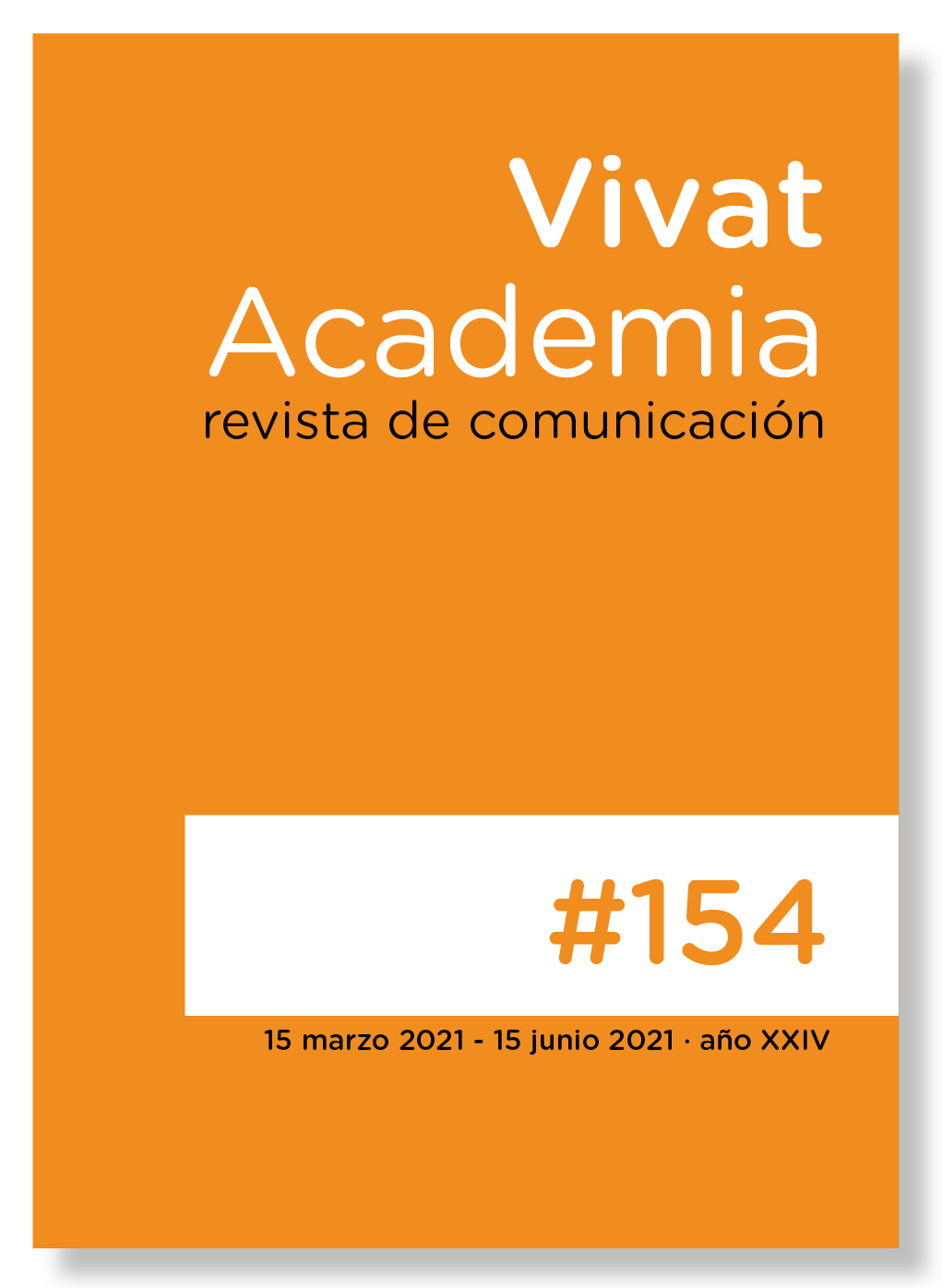Instagram as a device for the normalization of disobedient identity representations. A case study
Main Article Content
Abstract
Social media is a very useful dissemination, construction, and meeting tool for social and collective movements, also in the feminist/queer sphere. However, some authors consider that their decisive role in the gender socialization processes of the new generations is not always positive, as it replicates, to a large extent, those gender stereotypes that limit and restrict free identity expression. Under this premise, the present work aims to describe and analyze the gender representations observable in Instagram photographies linked to four Galician university campuses (a total of 449 images), through a content analysis complemented by a univariate and bivariate descriptive analysis, with contingency tables, standardized residuals, and Pearson's Chi-square test. This analysis attends to objective criteria, linked to the perceptible realities of the represented bodies, and allows us to identify the strategies for the construction of online gender identities manifested by university youth in those four Galician campuses. This way, no “disobedient” gender identities have been found that operates as a laboratory for the exploration and search for new corporeities/identities, which is why we can observe a strong tendency towards normative representations. It is thus concluded that Instagram works as a legitimation tool for the binary, normative, and, therefore, hegemonic proposal.
Downloads
Article Details

This work is licensed under a Creative Commons Attribution-NonCommercial-ShareAlike 4.0 International License.
References
Albenga, V. y Biscarrat, L. (2021). Aproximaciones feministas de la misoginia en redes sociales: una perspectiva francesa. Investig. Fem (Rev.) 12 (1), 57-66. DOI: https://doi.org/10.5209/infe.69088
Aránguez Sánchez, T. (2019). La metodología de la concienciación feminista en la época de las redes sociales. Ámbitos. Revista Internacional de Comunicación, 45, 238-257. http://dx.doi.org/10.12795/Ambitos.2019.i45.14 DOI: https://doi.org/10.12795/Ambitos.2019.i45.14
Blanco Ruiz, M. A. (2014). Implicaciones del Uso de las Redes Sociales en el Aumento de la Violencia de Género en Adolescentes. Comunicación y Medios, 30, 124-141. https://revistaschilenas.uchile.cl/handle/2250/10.5354/rcm.v0i30.32375
Caro Castaño, L. (2015). Construir y comunicar un “nosotras” feminista desde los medios sociales. una reflexión acerca del “feminismo del hashtag”. Revista de Comunicación y Ciudadanía Digital COMMONS, 4 (2), 124-154. http://dx.doi.org/10.25267/COMMONS.2015.v4.i2.06 DOI: https://doi.org/10.25267/COMMONS.2015.v4.i2.06
Cortés Canarelli, B. e Itarte, R. A. (2013). (Re)Construcción de identidades de género en espacios sociales y educativos. Aportaciones desde la pedagogía y la psicología. URBS. Revista de Estudios Urbanos y Ciencias Sociales, 3 (1), 69-87. http://hdl.handle.net/10835/2161
Dall’Orso-Swayne, V. y Arbaiza, F. (2021). Instagram como plataforma de ciberactivismo de influencers no-políticas a favor de movimientos feministas en Perú. RISTI E40 (01), 127-138.
Dueñas, D., Pontón, P., Belzunegui, A. y Pastor, I. (2016). Expresiones discriminatorias, jóvenes y redes sociales: la influencia del género. Comunicar, 46 (24), 67-76. https://doi.org/10.3916/C46-2016-07 DOI: https://doi.org/10.3916/C46-2016-07
Horvát, E. Á., Hanselmann, M., Hamprecht, F. A. y Zweig, K. A. (2012) Corrección: Uno más uno hace tres (para redes sociales). PLOS ONE 7 (4), 10.1371. https://doi.org/10.1371/annotation/c2a07195-0843-4d98-a220-b1c5b77a7e1a DOI: https://doi.org/10.1371/annotation/c2a07195-0843-4d98-a220-b1c5b77a7e1a
Martínez Labrín, S. y Bivort Urrutia, B. (2014). Procesos de producción de subjetividad de género en el trabajo académico: Tiempos y espacios desde cuerpos femeninos. Psicoperspectivas, 13 (1), 15-22. http://dx.doi.org/10.5027/psicoperspectivas-Vol13-Issue1-fulltext-334 DOI: https://doi.org/10.5027/psicoperspectivas-Vol13-Issue1-fulltext-334
Renau, V., Carbonell, X. y Oberst, U. (2012). Redes sociales on-line, género y construcción del self. Aloma. Revista de Psicologia, Ciències de l’Educació i de l’Esport, 30 (2), 97-107. https://www.raco.cat/index.php/Aloma/article/view/263045
Rettberg, J. W. (2009). Freshly generated for you, and Barack Obama: How social media represent your life. European Journal of Communication, 24, 451–466. https://doi.org/10.1177/0267323109345715 DOI: https://doi.org/10.1177/0267323109345715
Rose, J., Mackey-Kallis, S., Shyles, L., Barry, K., Biagini, D., Hart, C., & Jack, L. (2012). Face it: The Impact of Gender on Social Media Images. Communication Quarterly, 60 (5), 588-607. https://doi.org/10.1080/01463373.2012.725005 DOI: https://doi.org/10.1080/01463373.2012.725005
Sádaba, I. y Barranquero, A. (2019). Las redes sociales del ciberfeminismo en España: identidad y repertorios de acción. Athenea Digital, 19 (1). 1-24. https://doi.org/10.5565/rev/athenea.2058 DOI: https://doi.org/10.5565/rev/athenea.2058
Sánchez Duarte, J. M. y Fernández Romero, D. (2017). Subactivismo feminista y repertorios de acción colectiva digitales: prácticas ciberfeministas en Twitter. El profesional de la información 26 (5), 894-902. https://doi.org/10.3145/epi.2017.sep.11 DOI: https://doi.org/10.3145/epi.2017.sep.11
Sánchez-Labella Martín, I., Romo-Parra, C. (2021). Presencia del feminismo institucional en YouTube: estrategia de difusión de la información y ¿movilización de la ciudadanía? Revista de Investigaciones Feministas 12 (1), 79-89. DOI: https://doi.org/10.5209/infe.68913
Sell-Trujillo, L., Núñez Domínguez, T., Aix-Gracia, F. (2021). Flo6x8: intervenciones feministas para la ocupación y la resistencia. Revista de Investigaciones Feministas 12 (1), 145-156. DOI: https://doi.org/10.5209/infe.69377
Táboas-Pais, Mª. I. (2009). Análisis de los estereotipos corporales y de los modelos de actividad. (Tesis doctoral). Universidade de Vigo. Pontevedra. https://www.redalyc.org/articulo.oa?id=551656926011
West, C., & Zimmerman, D. H. (1987). Doing gender. Gender and Society, 1 (2), 125-151. http://links.jstor.org/sici?sici=0891-2432%28198706%291%3A2%3C125%3ADG%3E2.0.CO%3B2-W DOI: https://doi.org/10.1177/0891243287001002002
Wood, J. T. (2009). Gendered lives: Communication, gender and culture. Belmont.
Zafra, R. (2010). Un cuarto propio conectado. (Ciber)espacio y (auto)gestión del yo. Madrid.





